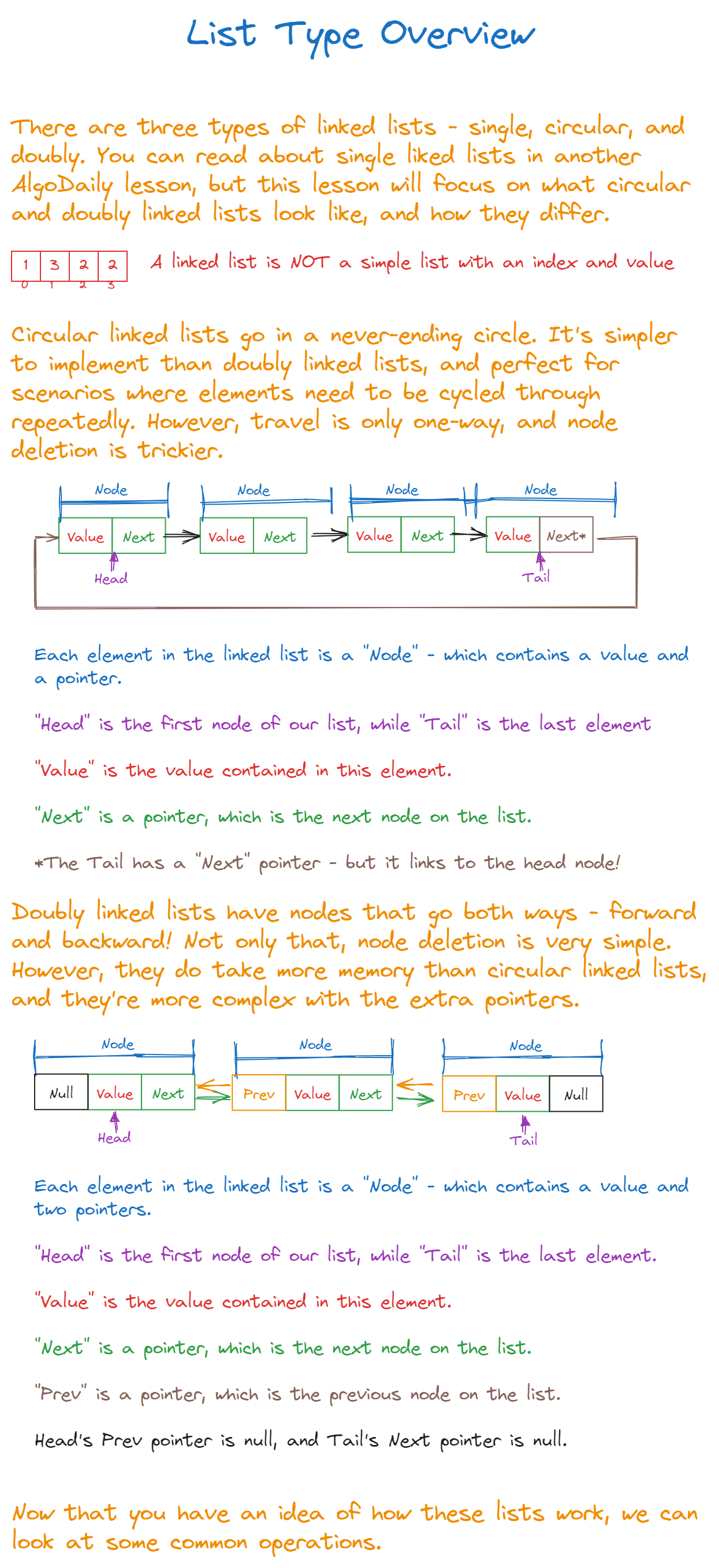Introduction
In the wonderful world of computer science, linked lists play a fundamental role in organizing and storing data. These dynamic data structures consist of elements known as nodes, each linking to the next, forming a chain of connected elements.
Imagine a treasure hunt, where every clue leads to the next. Now, picture two special kinds of treasure hunts:
Circular Linked Lists: It's a never-ending game, where the last clue brings you right back to the first, forming a continuous loop. There's no distinct beginning or end, just an exciting, perpetual cycle.
Doubly Linked Lists: This one is a bit more sophisticated! Each clue points to both the next and the previous ones. If you want to revisit a previous clue, or skip ahead to the next, you can easily do so, giving you more control over your adventurous journey.
Now, why do these matter, and when would you choose one over the other? Whether it's designing a turn-taking game or needing the flexibility to move both forwards and backwards through a list, understanding the nuances of circular and doubly linked lists is essential.
In the sections to follow, we'll explore:
- The characteristics of Circular Linked Lists
- The features and complexities of Doubly Linked Lists
- A thoughtful comparison between the two, illuminating their benefits, drawbacks, and ideal applications
By the end of this exploration, you'll have a firm grasp of these two types of linked lists, empowering you to select the right one for your next big project.

Access all course materials today
The rest of this tutorial's contents are only available for premium members. Please explore your options at the link below.


